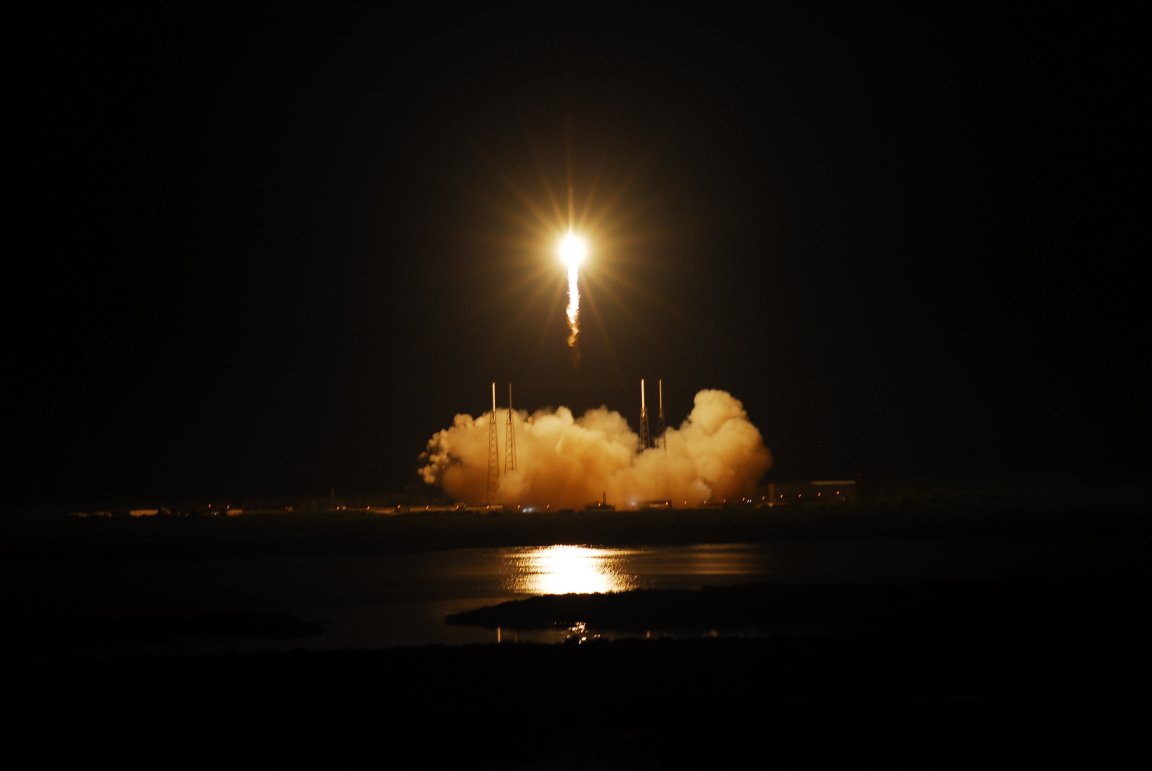
Per Ardua…
Continuing its thus far very successful mission to provide its customers with reliable and low-cost orbital transport, SpaceX has just launched the Japanese telecommunications satellite JCSAT-14, owned by SKY Perfect JSAT.
The satellite, which will provide a suite of services—including television programming, broadband connections and cell phone service throughout East Asia and Oceania—is to be delivered to a geostationary orbit 35,900 km (22,300 mi) above the Earth.
Watch the event unfold in the video below:
It’s the first of two planned satellite launches for SKY Perfect JSAT, which is the largest satellite operator in Asia, and is therefore an immense coup for SpaceX, which needs such customers for its bread and butter—their steady and repeat business will underwrite the ambitious dreams for wider space travel cherished by the company’s founder, Elon Musk.
These dreams include easier and cheaper access to space, private missions to Mars, the establishment of colonies and even cities on the Red Planet, and eventually the evolution of what Musk calls, quaintly, a truly “multiplanetary civilization.”
Planning to send Dragon to Mars as soon as 2018. Red Dragons will inform overall Mars architecture, details to come pic.twitter.com/u4nbVUNCpA
— SpaceX (@SpaceX) April 27, 2016
The satellite is to be lofted into orbit with SpaceX’s workhorse Falcon 9 rocket. The company has been working through the problem of creating a fully reusable rocket in its customary methodical way; there were early failures and setbacks, of course, as must be the case with any worthwhile undertaking.
But they finally achieved success on April 8, sticking a beautiful landing of a Falcon 9 booster on an autonomous drone ship on the heaving rollers of the Atlantic—which, it hardly needs to be added, was no mean feat. That launch, however, involved the delivery of supplies and a Bigelow Aerospace inflatable compartment to the International Space Station in Low Earth Orbit (LEO), which is impressive, but it’s hardly the only orbital configuration SpaceX will have to contend with.
…ad Astra
This morning’s launch and landing was much trickier. Rather than delivering a payload to LEO, the rocket had to fly higher and faster to deliver the Japanese satellite to Geosynchronous Earth Orbit (GEO), which makes for a rougher and more challenging landing for the booster—descending at higher speeds and from a greater height.
It was an important milestone when SpaceX stuck this landing—not just another feather in Musk’s already very plumage-filled cap, but the dawn of the real Space Age, where space travel becomes the purview of private companies, and not merely another theater for nationalistic one-up-manship.
So we’re all rooting for you, Elon—go SpaceX, go!